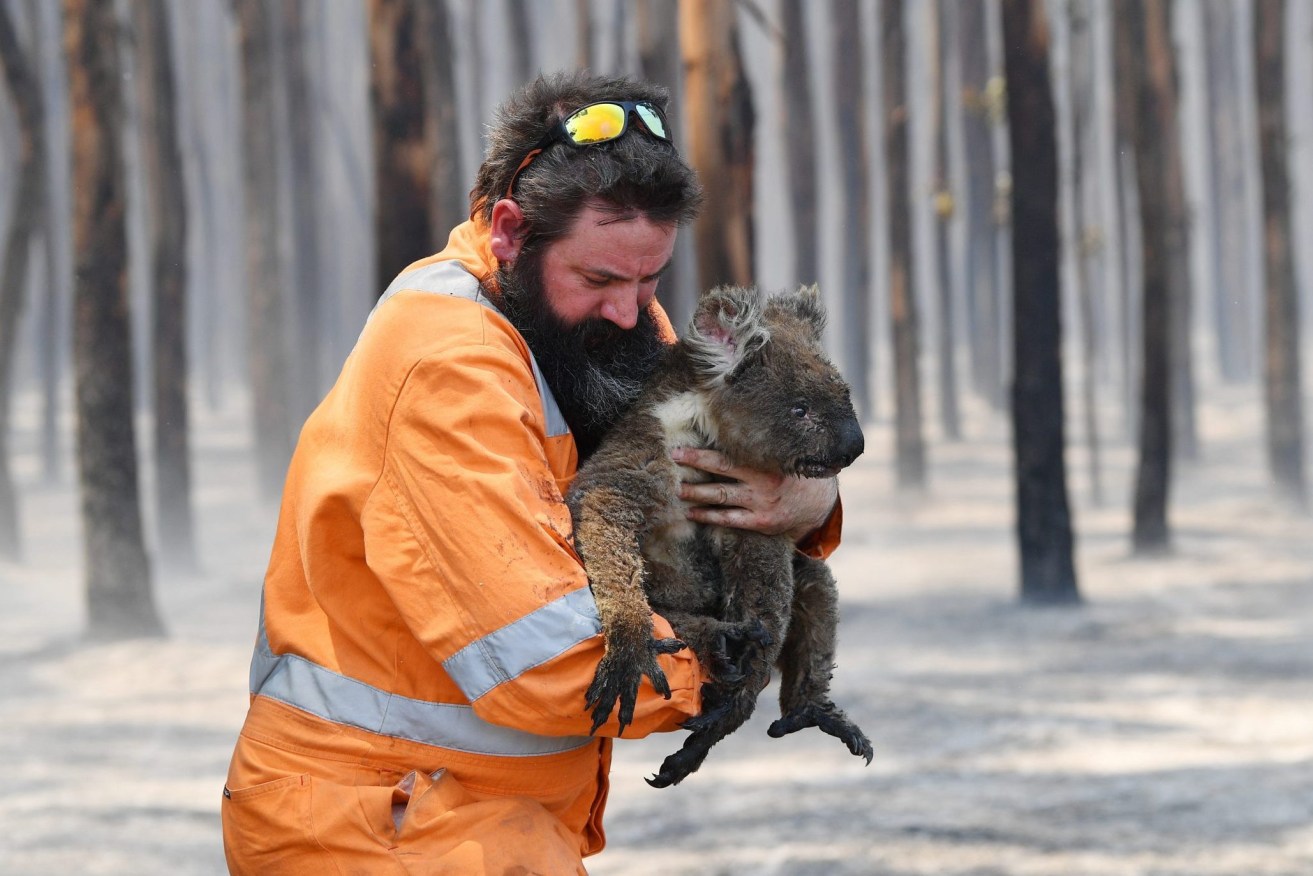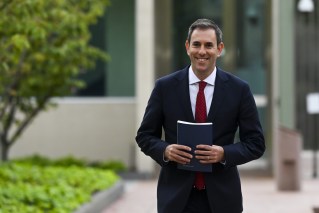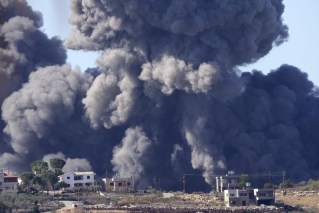Feeling the heat? Crunching the climate stats suggests you ain’t seen nothing yet.
Climate change might be ailing the planet, but it also carries increased risks for human health, with rural populations likely to feel the brunt.


The threat of a new El Nino weather pattern could lead to more bushfires. (Photo: David Mariuz/AAP PHOTOS)
If warming temperatures continue on their current trajectory in Queensland, modelling indicates Brisbane’s year-round climate will be closer to that of Mareeba in the tropical north.
In the central west, Longreach is projected to be more like the current climate of Port Hedland in WA.
Elevated Toowoomba, known for its milder climes, will go from four days above 35 degrees on average to 14 annually.
Queensland can expect longer fire seasons, with more than 40 per cent more very high fire danger days.
As Dave McRae, Department of Agriculture and Fisheries’ state climate risk coordinator told the Rural Doctors Association of Queensland conference back in June: “When you go digging in the data you get a really strong message that the climate is changing.
“If you want to know what’s going to happen with the climate and how it will impact our world, you only have to look at the last 30 years as the clearest indicator of what we can expect moving forward.”
So why was McRae, who has spent a career observing weather patterns and advising farmers and agribusinesses on how to adapt to long-term climate change, speaking at a medical conference?
The reason represents a widening of the climate-change risk assessment, where experts are focused not only on the large-scale, almost doomsday impacts to the biosphere, but the granular detail of how this expected deterioration in weather conditions will manifest in people’s health.
Put simply, as the planet gets sicker, we can expect to get sicker too.
Medical intervention
Dr June Brundell, a medical administrator at Hervey Bay, has been working with McRae to piece together a compelling, albeit sobering picture, of what the medical prognosis holds for Queensland.
COVID’s current grip on the national consciousness may have sharpened the focus on the links between this century’s first global pandemic and global warming, but there have also been other warning signs.
Scientists have theorised that COVID may have originated in animals, which under threat from urban encroachment in China brought their decimated habitats in closer proximity to people, thereby facilitating animal-to-human transmission of the infection.
Brisbane’s deadly Hendra virus is another pathogen that has been confirmed by scientists as an inter-species traveller, jumping from flying foxes to horses and then to humans, almost always with fatal consequences.

Dr June Brundell
Brundell says the threats to human health in coming years will emerge in ways both large – like the terrifying, exotic pandemics – but also small – seemingly everyday complaints that we currently live with that will strike with greater intensity in different locations and seasons.
In many respects, she says, the future has already arrived.
The Black Summer bushfires of 2019-2020 remain freshly scorched into the memories of Australians and the 33 lives that event tragically claimed.
However, it is not as well known that 429 people subsequently died due to conditions worsened by toxic smoke inhalation. A further 4000 people were admitted to hospital for respiratory and cardiovascular conditions due to breathing in poorer air quality.
Prolonged drought has a direct bearing on mental health decline, sometimes resulting in increased suicides and domestic violence, Brundell says.
More heatwaves see more people in hospital emergency departments with heat stress and heatstroke, exacerbating existing cardiovascular and respiratory conditions that in turn increase the demand on responding government services.
The risks are not only in the heat and dust. Some regions will experience higher rainfall over shorter periods, bringing the risk of mosquito-borne diseases such as dengue fever, Ross River fever and a possible resurgence of malaria into zones currently classified as temperate.
Tested by fire
Before relocating to Hervey Bay, Brundell was a doctor at Stanthorpe Hospital and witnessed first-hand the trauma of a community living through bushfires from September 2019 and dire water shortages that required water to be trucked-in over 18 months.
“Then we got hit with the pandemic,” she said. “And people had the added challenge of maintaining good hygiene and sanitation living on 80 litres of water per person per day.
“There’s a lot of implications there for people’s mental and physical health, not to mention the stressors that come when drought produces an agricultural and business downturn.”
Griffith University’s Associate Professor Anne Roiko, who spoke at the same conference as Brundell and McRae, said it was a misconception to view climate change as a ‘single-exposure’ event.
“It is a complex system of changeable physical characteristics that influence many things, which in turn influence human biology, psychology and ecology,” she said.
“Like poverty, it is a risk multiplier in how it influences health outcomes.”
Roiko says the risks are beyond debate. The bigger question is does our health system have the “adaptive capacity” to pivot to what is fast becoming our new reality?
Despite research conducted for Queensland’s climate change adaptation strategy by the Climate and Health Alliance, Roiko says the answer is currently no.
“The health and well-being sector is geared up for urgent responses to immediate demands,” she said.
“It does not generally focus on risks that emerge slowly and over long-time frames.”
For Brundell, who previously worked as an agricultural extension officer with Landcare before studying medicine, future health planning has to include the unique experience of rural people if medical services are to align with the needs of a climate-altered world.
“Rural people tend to be more impacted by natural disasters, simply because of where they live and the types of work they generally do, which is outdoors,” she said.
“They generally have a higher rate of exposure to the natural elements as it is anyway, yet, conversely, most of our health system planning is done in metropolitan areas using the large city experience as the template.
“I think we need to re-assess the direction of how we go about that, which means more research and consultation with rural medical staff and the people they care for.”








